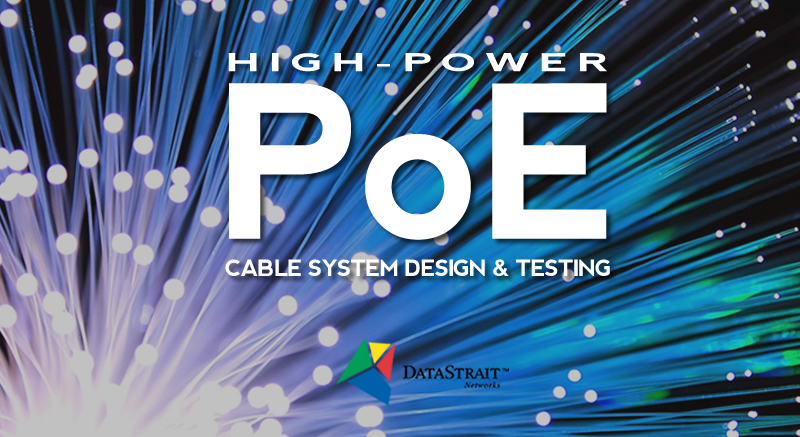Power over Ethernet (PoE) technology has become the gold standard of most electrical devices in homes and businesses. Although there are pros and cons to PoE, Power over Ethernet allows digital devices to become “smart,” by enabling them to connect to an IP network. PoE devices are capable of sending and receiving digital signals, thus giving them the ability to connect to multiple devices for additional functionality.
For PoE devices to function correctly, they should have a PoE cable that is capable of delivering sufficient power to the device itself. PoE cables (also known as twisted pair cables) provide a combination of electrical power and data to each device connected. PoE cables are capable of delivering up to 10 Gbps of data and 100W of power to smart devices.
Before a cable is prepared to power a PoE system, it first needs to be designed and optimized for functionality. Indeed, PoE cables need to be safe, consume low voltage power, and enhance connectivity across used devices.
The following are five key considerations for the design & field testing of an optimized high-power PoE Cable System.
1. Electrical Safety
As is expected with any electrical device, safety is a top concern for high power PoE cable systems. PoE cables carry a high amount of power (up to 100W) and reducing the risk of electrocution is a top concern. Many PoE devices don’t require an electrician for successful installation. They’re designed such that the risk of being electrocuted is minimal, without limiting the efficiency of the device.
For a PoE cable to be successful, it needs to be built around the National Electric Code thresholds that fit a low voltage cabling system. Also, power needs to be supplied by power sourcing equipment (PSE) that is validly connected to a powered device. If the powered device is disconnected from the cable, power should no longer flow to the device or the cable channel being used.
2. The Established Standards and Regulations
When PoE cables are designed and tested, they should follow established standards and regulations. Several bodies, such as the IEEE, the TIA, and the established ISO standards for IEC (International Electrotechnical Commission) have specific recommendations and requirements for PoE cables. These requirements cover testing guidelines, safety standards, efficiency requirements, and much more.
It’s vital for PoE cables to follow these guidelines because they specify essential procedures that enable the design and field testing process to be more reliable.
3. PoE Connectivity
For PoE cables to be successful, they should be capable of preventing spark gap erosion. Spark gap erosion is a condition in PoE cables that results in the degradation of connections and a state called arcing. Connectivity issues in the PoE cable can be addressed by using a high density jack (HDJ) from Legrand.
Spark Gap erosion shown located away from the critical contact area. Arcing is inevitable, but in a fully mated connection, the plug makes contact with the jack in the critical contact area, away from any spark gap erosion.
Legrand’s high density jacks are are designed to separate the fully mated positions of plugs and jacks. This technique protects the degradation of connections that are critical towards optimal network performance. They also reduce errors that may occur due to bit error rates in the connection.
With optimal connectivity, a high power PoE cable will contribute to the efficiency of your PoE cable system’s performance.
4. PoE Cable Temperature Levels
How hot PoE cables become can have an impact on data transmission and the safety of locations where such cables have been installed. During PoE cable design and testing, temperature tolerance will be one of the most important considerations. High temperatures may negatively impact transmission wattage and reduce the efficiency of the cable itself. Therefore, during testing, the optimal balance between temperature and cable tolerance needs to be identified.
A sample cable under normal conditions.
Cable damage and insulation degradation after 10 days at 120 degrees C.
5. The Cabling Channel
Another critical factor to consider is the cabling channel. During testing, the cable should be proved to have proper insulation and optimal routing. Insulation is necessary because it will ensure that the PoE cable routes electrical power in an optimal direction. Furthermore, insulation provides high performance at the right temperatures. With a proper cabling channel, power efficiency will be achieved, as well as the efficiency of the PoE cabling channel itself.
With these five considerations in place, you will be on the path towards selecting an efficient and effective PoE cable system. Each factor also plays an important role in the final overall performance of the cabling system. For more guidance on Power over Ethernet solutions, contact Datastrait Networks for a consultation with a member of their team of in-house experts.


